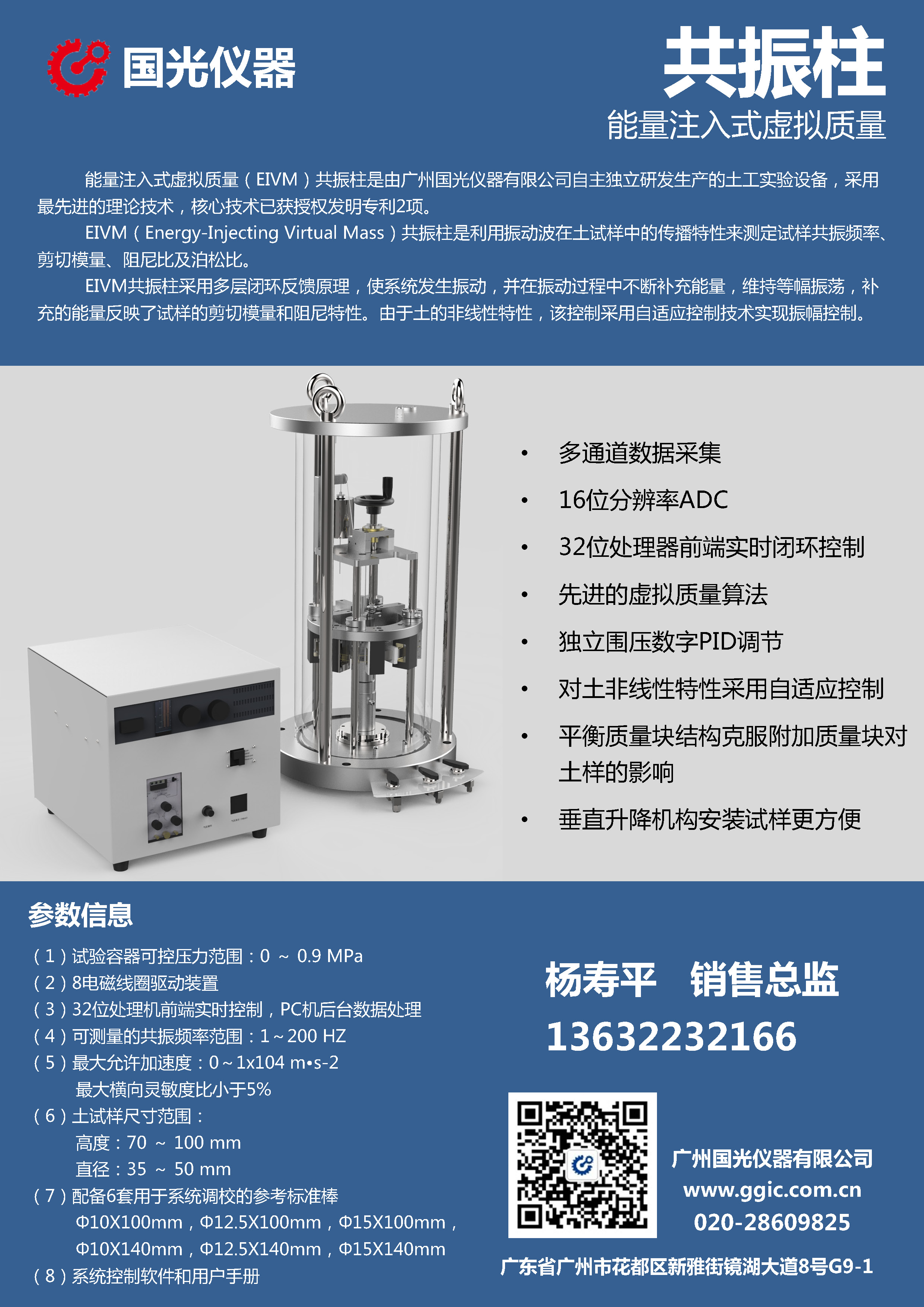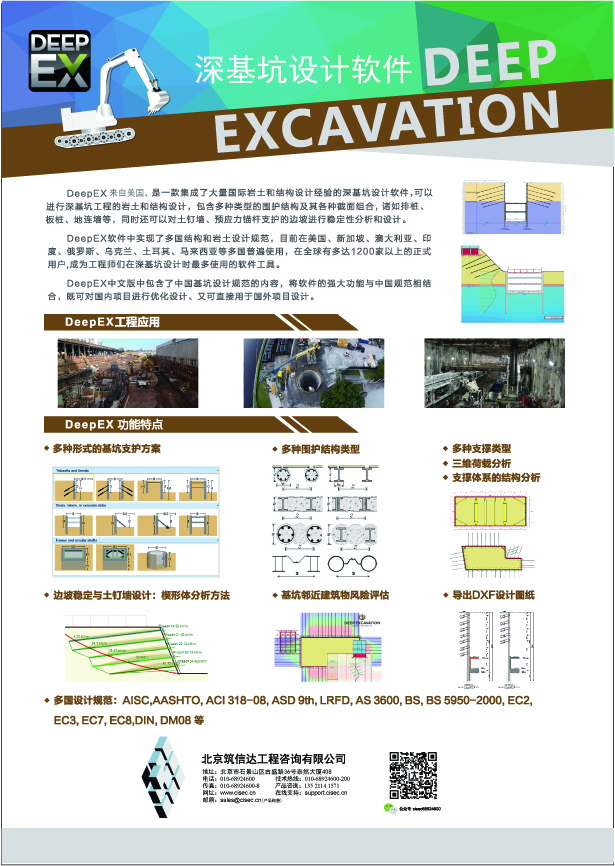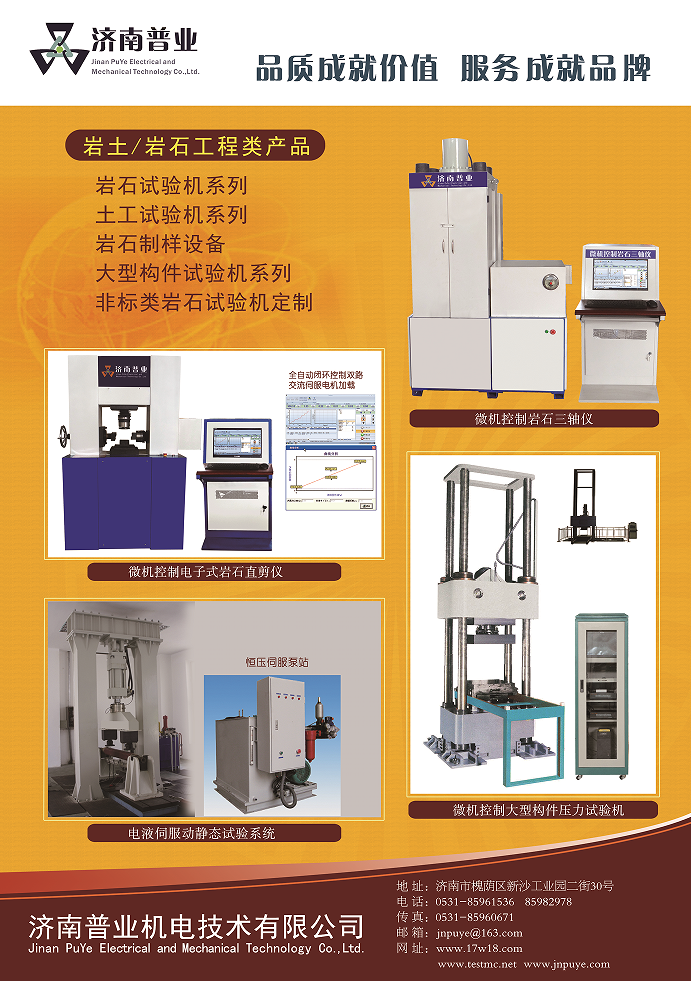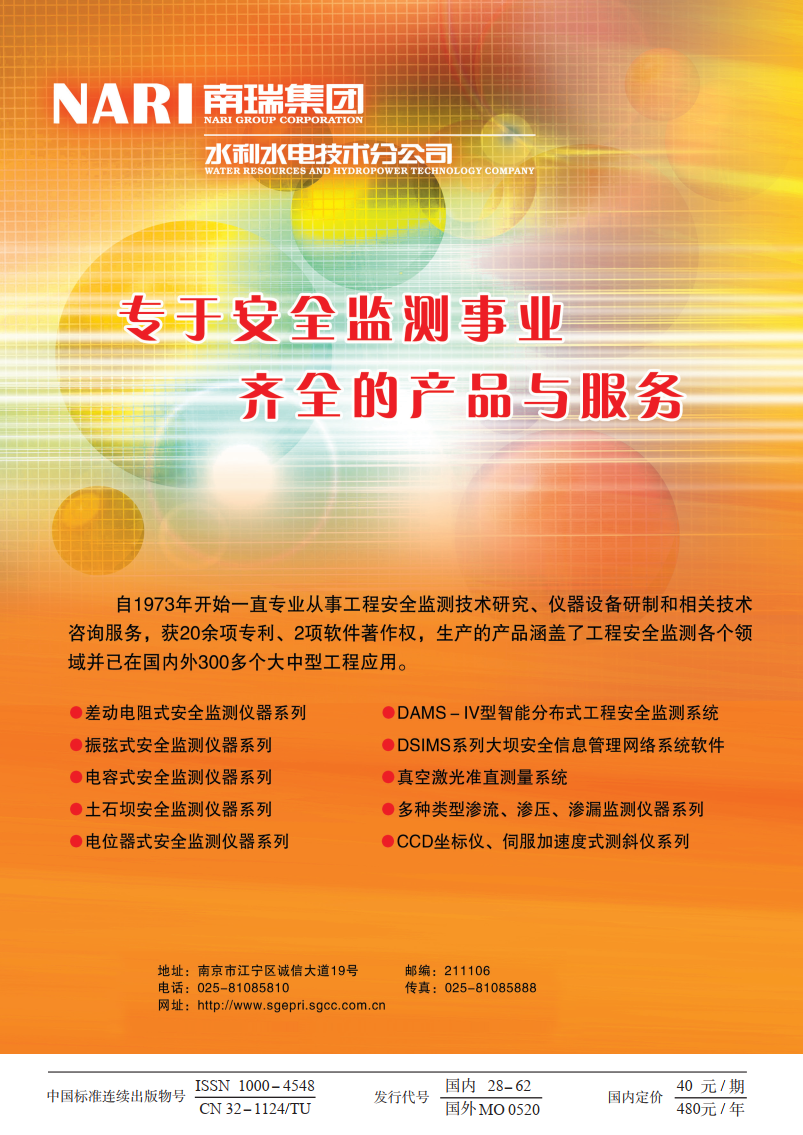| [1] |
DE BOER R, EHLERS W. The development of the concept of effective stresses[J]. Acta Mechanica, Springer-Verlag, 1990, 83 (1-2): 77 – 92.
|
| [2] |
OKA F. Validity and limits of the effective stress concept in geomechanics[J]. Mechanics of Cohesive-Frictional Materials, 1996, 1 (2): 219 – 234.
|
| [3] |
MITCHELL J K, SOGA K. Fundamentals of soil behavior[M]. 3rd ed. New York: John Wiley & Sons, Inc., 2005.
|
| [4] |
JARDINE R J, GENS A, HIGHT D W, et al. Developments in understanding soil behaviour[C]// Advances in Geotechnical Engineering: The Skempton Conference[M]. London: Thomas Telford, 2004, 1 : 103 – 206.
|
| [5] |
NUTH M, LALOUI L. Effective stress concept in unsaturated soils: clarification and validation of a unified framework[J]. International Journal for Numerical and Analytical Methods in Geomechanics, 2008, 32 (7): 771 – 801.
|
| [6] |
TERZAGHI K. The shearing resistance of saturated soils and the angle between the planes of shear[C]// Proceedings of the 1st International Conference on Soil Mechanics and Foundation Engineering, Harvard University, 1936, 1 : 54 – 56.
|
| [7] |
CLAYTON C R I, STEINHAGEN H M, POWRIE W. Terzaghi's theory of consolidation, and the discovery of effective stress[J]. Geotechnical Engineering, ICE, 1995, 113 (4): 191 – 205.
|
| [8] |
LADE P V, DE BOER R. The concept of effective stress for soil, concrete and rock[J]. Géotechnique, 1997, 47 (1): 61 – 78.
|
| [9] |
SKEMPTON A W. Effective stress in soils, concrete and rocks[C]// Proceedings of the Conference on Pore Pressure and Suction in Soils, Butterworths, London, 1960: 4 – 16.
|
| [10] |
BLUHM J, DE BOER R. Effective stresses - a clarification[J]. Archive of Applied Mechanics, Springer-Verlag, 1996, 66 (7): 479 – 492.
|
| [11] |
DE BOER R. Uplift, friction, capillarity and effective stress: revisited via the porous media theory[J]. Géotechnique, 2001, 51 (9): 811 – 814.
|
| [12] |
BISHOP A W, SKINNER A E. The influence of high pore-water pressure on the strength of cohesionless soils[J]. Philosophical Transactions of the Royal Society of London, Series A, Mathematical and Physical Sciences, 1977, 284 (1318): 91 – 130.
|
| [13] |
JAEGER J C. The 11th Rankine Lecture: Friction of rocks and stability of rock slopes[J]. Géotechnique, 1971, 21 (2): 97 – 134.
|
| [14] |
SCHOFIELD A. Disturbed soil properties and geotechnical design[M]. London: Thomas Telford Limited, 2005.
|
| [15] |
ATKINSON J. Peak strength of overconsolidated clays[J]. Géotechnique, 2007, 57 (2): 127 – 135.
|
| [16] |
SKINNER A E. A note on the influence of interparticle friction on the shearing strength of a random assembly of spherical particles[J]. Géotechnique, 1969, 19 (1): 150 – 157.
|
| [17] |
JOST H P. Lubrication (tribology) education and research: a report on the present position and industry's needs[R]. London: Her Majesty's Stationery Office, Department of Education and Science, 1966.
|
| [18] |
HALLING J. Principles of tribology[M]. London: MacMillan Press Ltd., 1975.
|
| [19] |
温诗铸 , 黄 平 . 摩擦学原理 [M]. 第 3 版 . 北京 : 清华大学出版社 , 2008. (WEN Shi-zhu, HUANG Ping. Principles of tribology[M]. 3rd edition. Beijing: Tsinghua University Press, 2008. (in Chinese))
|
| [20] |
LUDEMA K C. Friction, wear, lubrication: a textbook in tribology[M]. Boca Raton, Florida: CRC Press, Inc., 1996.
|
| [21] |
BHUSHAN B. Introduction to tribology[M]. New York: John Wiley & Sons, Inc., 2002.
|
| [22] |
CAVARRETTA I, COOP M, O’SULLIVAN C. The influence of particle characteristics on the behaviour of coarse grained soils[J]. Géotechnique, 2010, 60 (6): 413 – 423.
|
| [23] |
BYERLEE J. Friction of rocks[J]. Pure and Applied Geophysics, 1978, 116 (4-5): 615 – 626.
|
| [24] |
HORN H M, DEERE D U. Frictional characteristics of minerals[J]. Géotechnique, 1962, 12 (4): 319 – 335.
|
| [25] |
INDRARATNA B, HAQUE A. Shear behaviour of rock joints[M]. Rotterdam: A. A. Balkema, 2000.
|
| [26] |
PEREIRA J P. Rolling friction and shear behaviour of rock discontinuities filled with sand[J]. International Journal of Rock Mechanics and Mining Sciences, 1997, 34 (3-4): 1 – 17.
|
| [27] |
DE TOLEDO P E C, DE FREITAS M H. Laboratory testing and parameters controlling the shear strength of filled rock joints[J]. Géotechnique, 1993, 43 (1): 1 – 19.
|
| [28] |
OKAWARA M, MITACHI T. Basic research on mechanism of the residual strength of clay[C]// DI BENEDETTO H, DOANH T, GEOFFROY H, SAUZ é AT C. Proceedings of the 3rd International Symposium on "Deformation Characteristics of Geomaterials"[M]. The Netherlands: Swets & Zeitlinger B V, 2003, 505 – 510.
|
| [29] |
O’ROURKE T D, DRUSCHEL S J, NETRAVALI A N. Shear strength characteristics of sand-polymer interfaces[J]. Journal of Geotechnical Engineering, ASCE, 1990, 116 (3): 451 – 469.
|
| [30] |
DOVE J E, FROST J D. Peak friction behavior of smooth geomembrane-particle interfaces[J]. Journal of Geotechnical and Geoenvironmental Engineering, ASCE, 1999, 125 (7): 544 – 555.
|
| [31] |
郑德宾 , 龚 平 . 土体抗剪强度指标相关性特征研究 [J]. 中国水运 , 2008, 8 (1): 59 – 61. (ZHENG De-bin, GONG Ping. Research on correlative characteristics of soil strength indexes[J]. China Water Transport, 2008, 8 (1): 59 – 61. (in Chinese))
|
| [32] |
童志怡 , 陈从新 , 徐 健 , 等 . 基于黏着摩擦理论的结构面抗剪强度选取方法 [J]. 岩土工程学报 , 2008, 30 (9): 1367 – 1371. (TONG Zhi-yi, CHEN Cong-xin, XU Jian, et al. Selection of shear strength of structural plane based on adhesion friction theory[J]. Chinese Journal of Geotechnical Engineering, 2008, 30 (9): 1367 – 1371. (in Chinese))
|
| [33] |
高文龙 , 姜耀东 , 湛 川 . 软弱结构面表面形态与充填度的力学特性研究 [J]. 工程地质学报 , 2010, 18 (1): 127 – 131. (GAO Wen-long, JIANG Yao-dong, ZHAN Chuan. The study of structural-plane based on apperance and backfilling state[J]. Journal of Engineering Geology, 2010, 18 (1): 127 – 131. (in Chinese))
|
| [34] |
LAMBE T W, WHITMAN R V. Soil mechanics[M]. New York: John Wiley & Sons, Inc., 1969.
|
| [35] |
BISHOP A W. Discussion on "shear characteristics of a saturated silt, measured in triaxial compression"[J]. Géotechnique, 1954, 4 (1): 43 – 45.
|
| [36] |
HORNE M R. The behaviour of an assembly of rotund, rigid, cohesionless particles. III[J]. Proceedings of the Royal Society of London, Series A, Mathematical and Physical Sciences, 1969, 310 (1500): 21 – 34.
|
| [37] |
PROCTER D C, BARTON R R. Measurements of the angle of interparticle friction[J]. Géotechnique, 1974, 24 (4): 581 – 604.
|
| [38] |
ISHIBASHI I, PERRY C III, AGARWAL T K. Experimental determinations of contact friction for spherical glass particles[J]. Soils and Foundations, 1994, 34 (4): 79 – 84.
|
| [39] |
THORNTON C. Numerical simulations of deviatoric shear deformation of granular media[J]. Géotechnique, 2000, 50 (1): 43 – 53.
|
| [40] |
THORNTON C, ZHANG L. On the evolution of stress and microstructure during general 3D deviatoric straining of granular media[J]. Géotechnique, 2010, 60 (5): 333 – 341.
|
| [41] |
MESRI G, ADACHI K, ULLRICH C R. Pore-pressure response in rock to undrained change in all-round stress[J]. Géotechnique, 1976, 26 (2): 317 – 330.
|
| [42] |
SRIDHARAN A, VENKATAPPA RAO G. Shear strength behaviour of saturated clays and the role of the effective stress concept[J]. Géotechnique, 1979, 29 (2): 177 – 193.
|
| [43] |
GRAHAM J, OSWELL J M, GRAY M N. The effective stress concept in saturated sand-clay buffer[J]. Canadian Geotechnical Journal, 1992, 29 (6): 1033 – 1043.
|
| [44] |
HUECKEL T. On effective stress concepts and deformation in clays subjected to environmental loads: discussion[J]. Canadian Geotechnical Journal, 1992, 29 (6): 1120 – 1125.
|
| [45] |
沈珠江 . 关于固结理论和有效应力的讨论 [J]. 岩土工程学报 , 1995, 17 (6): 118 – 119. (SHEN Zhu-jiang. Discussion on theory of consolidation and effective stress[J]. Chinese Journal of Geotechnical Engineering, 1995, 17 (6): 118 – 119. (in Chinese))
|
| [46] |
沈珠江 . 莫把虚构当真实——岩土工程界概念混乱现象剖析 [J]. 岩土工程学报 , 2003, 25 (6): 767 – 768. (SHEN Zhu-jiang. No confusing fiction with reality —— analysis of misunderstanding of some concepts in geotechnical engineering[J]. Chinese Journal of Geotechnical Engineering, 2003, 25 (6): 767 – 768. (in Chinese))
|
| [47] |
李广信 . 有效应力原理能够推翻吗 [J]. 岩土工程界 , 2007, 10 (7): 22-26. (LI Guang-xin. Can the principle of effective stress be overthrew[J]. Geotechnical Engineering World, 2007, 10 (7): 22 – 26. (in Chinese))
|
| [48] |
SINGH P N, WALLENDER W W. Effective stress from force balance on submerged granular particles[J]. International Journal of Geomechanics, 2007, 7 (3): 186 – 193.
|
| [49] |
BISHOP A W, BLIGHT G E. Some aspects of effective stress in saturated and partly saturated soils[J]. Géotechnique, 1963, 13 (3): 177 – 197.
|
| [50] |
SIMONS N E, MENZIES B K. A note on the principle of effective stress[J]. Géotechnique, 1974, 24 (2): 259 – 261.
|
| [51] |
MERCKELBACH L M, KRANENBURG C. Determining effective stress and permeability equations for soft mud from simple laboratory experiments[J]. Géotechnique, 2004, 54 (9): 581 – 591.
|
| [52] |
JENG D S, HSU J R C. Wave-induced soil response in a nearly saturated sea-bed of finite thickness[J]. Géotechnique, 1996, 46 (3): 427 – 440.
|
| [53] |
KHALILI N, GEISER F, BLIGHT G E. Effective stress in unsaturated soils: review with new evidence[J]. International Journal of Geomechanics, ASCE, 2004, 4 (2): 115 – 126.
|
| [54] |
DE BUHAN P, DORMIEUX L. A micromechanics-based approach to the failure of saturated porous media[J]. Transport in Porous Media, 1999, 34 (1-3): 47 – 62.
|
| [55] |
LYDZBA D, SHAO J-F. Stress equivalence principle for saturated porous media[J]. Comptes Rendus Mecanique, 2002, 330 (4): 297 – 303.
|
| [56] |
DIDWANIA A K. Micromechanical basis of concept of effective stress[J]. Journal of Engineering Mechanics, ASCE, 2002, 128 (8): 864 – 868.
|
| [57] |
DE BUHAN P, DORMIEUX L. On the validity of the effective stress concept for assessing the strength of saturated porous materials: a homogenization approach[J]. Journal of the Mechanics and Physics of Solids, 1996, 44 (10): 1649 – 1667.
|
| [58] |
HOULSBY G T. The work input to a granular material[J]. Géotechnique, 1979, 29 (3): 354 – 358.
|
| [59] |
HOULSBY G T, DEAN E T R. Discussion: editorial[J]. Géotechnique, 2005, 55 (5): 415 – 417.
|
| [60] |
LI X S. Effective stress in unsaturated soil: a microstructural analysis[J]. Géotechnique, 2003, 53 (2): 273 – 277.
|
| [61] |
BORJA R I. On the mechanical energy and effective stress in saturated and unsaturated porous continua[J]. International Journal of Solids and Structures, 2006, 43 (6): 1764 – 1786.
|
| [62] |
GHABEZLOO S , SULEM J, GU é DON S, MARTINEAU F. Effective stress law for the peameability of a limestone[J]. International Journal of Rock Mechanics and Mining Sciences, 2009, 46 (2): 297 – 306.
|
| [63] |
LU N. Is matric suction a stress variable?[J]. Journal of Geotechnical and Geoenvironmental Engineering, ASCE, 2008, 134 (7): 899 – 905.
|
| [64] |
KHALILI N, ZARGARBASHI S. Influence of hydraulic hysteresis on effective stress in unsaturated soils[J]. Géotechnique, 2010, 60 (9): 729 – 734.
|








 下载:
下载:
